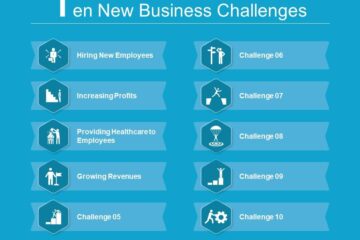
On the edge of a bucolic field in Princeton, N.J., an eco-friendly office building recently opened its doors. Plants festoon the roof, a living wall is planned for the lobby, and rainwater storage tanks supply the building’s needs. In the parking lot there are wind turbines, solar panels and electric vehicle charging stations.
It is the picture of a sustainable future, one in which society’s insatiable demand for electricity can be met without polluting the planet.
The same cannot be said of the building’s tenant, NRG Energy.
The biggest independent power producer in the country, NRG sells electricity to utilities, companies and individual homes. To generate all that wattage, it burns enormous amounts of natural gas, coal and oil, making NRG one of the country’s biggest polluters.
It isn’t trying to muck up the planet; that’s just the nature of the business NRG is in. The electricity industry is the biggest source of greenhouse gas emissions in the United States, according to the Environmental Protection Agency. In 2014, NRG was the fourth-largest emitter of carbon dioxide among the country’s power producers.
The business of providing Americans with electricity hasn’t evolved much in a century. But today, growing concerns about climate change, affordable wind and solar power, and the potential for distributed generation are pressuring utilities and power producers like NRG to clean up their acts, and fast.
“Our industry is going though massive transformation, the likes of which we’ve never seen,” said Mauricio Gutierrez, the recently installed chief executive of NRG. “The industry has never seen this much turnover.”
All this transformation has been particularly tumultuous for NRG, which has weathered more than its share of mishaps and unintended consequences: In May, for example, a fire knocked out a crucial tower at a cutting-edge but troubled solar power plant that the company manages in the Southern California desert. Its big bets on residential solar and on a national charging network for electric vehicles were ahead of their time and fizzled.

The shale and fracking booms in the United States made natural gas cheap and abundant, pulling down the price of electricity and making power sources that NRG still depends on heavily — including coal, nuclear and renewables — less profitable. Investors lost faith in the company, NRG’s stock plummeted, and its previous chief executive was summarily fired, replaced by Mr. Gutierrez.
Far from emerging as an industry pioneer, NRG has become a cautionary tale. A power-hungry nation needs to change the way it is fueled, but as NRG shows, transitioning to clean power is messy business.
“The power producers and utilities are the canaries in the coal mine,” said Aron Cramer, C.E.O. of Business for Social Responsibility, a consulting firm. “And there’s a lot of road kill in the midst of this transition to a lower-carbon energy system.”
No two companies face the exact same set of challenges. But at some level, the quandary preoccupying NRG is one that all power producers and utilities will ultimately face: how to make more electricity while emitting fewer greenhouse gases.
NRG wasn’t always a clean-energy proponent. Until recently, it was just another power producer, burning fossil fuels to electrify the grid.
In 2003, it tapped David Crane to be its chief executive. Mr. Crane, who previously ran a traditional London-based power company, set about expanding NRG’s core business. He acquired Reliant Energy, which sells electricity to homes and businesses in Texas, as well as GenOn Energy, a rival based in Houston. These moves vastly expanded NRG’s scale, and its emissions.
By 2006, Mr. Crane began to respond to the climate crisis and became one of the country’s most unlikely environmentalists.
At first, he made modest changes. NRG bought a wind power company, which it later sold. Soon, though, Mr. Crane made large investments in wind and solar plants and spent heavily on pet projects like a national network of electric-car charging stations.
Seemingly overnight, the fossil fuels executive became a champion of renewable energy. He wanted to turn the hub-and-spoke utility model — with big power plants sending electricity out to homes and businesses — inside out.
Instead, in Mr. Crane’s vision, solar panels and wind turbines would blanket the country, heralding an era of distributed energy production. He called environmental protection a “moral imperative.” Last year, NRG said it would slash carbon emissions in half by 2030 and reduce them by 90 percent by 2050.
“It’s the destiny of NRG to be a leader,” Mr. Crane said at the groundbreaking of the new headquarters, “to create a more sustainable and prosperous future while winning the fight against climate change.”
Continue reading the main story
Mr. Crane was channeling the spirit of the time. In December, world leaders in Paris pledged to combat climate change. The United States said it would cut its greenhouse gas emissions by more than a quarter in 10 years. With wind and solar power cheaper than ever and consumers starting to embrace energy-saving technologies, these targets could be within reach.
But the climate crisis won’t be solved with more Teslas alone. If the goals set in Paris are to be met, big electricity producers like NRG will need to reduce emissions while increasing power production. So Mr. Crane set about trying to retool NRG’s fleet of dirty power plants while building a new generation of utility-scale wind and solar projects.
NRG’s dual personality — fossil fuel giant and clean energy pioneer — is on display at two relatively new facilities on opposite ends of the country.
Just south of Los Angeles International Airport, four smokestacks punctuate the sandy coastline. There in one form or another since the 1950s, they are part of the El Segundo Energy Center, which produces enough electricity to power nearly 450,000 homes.
At first glance, it is just another power plant burning cheap and abundant natural gas. Yet the El Segundo plant is among the most sophisticated of its kind. The two operational units, which came online in 2013, replaced inefficient relics constructed a half-century ago. Wastewater is recycled, emissions controls minimize the production of nitrogen oxide and carbon monoxide, and a mix of combustion and steam turbines greatly enhance the amount of energy derived from the gas.

And perhaps most critically, the El Segundo Energy Center is only occasionally generating power.
A generation ago, it operated almost constantly, feeding the vast energy needs of Los Angeles. But over the last several years, big power companies — including NRG — have constructed enormous solar power plants in Southern California, supplying a growing share of daytime electricity.
When the sun is shining, NRG’s new high-tech gas-fired power plant is often dormant, coming alive only when demand ramps up and the sun has dimmed. In that sense, the El Segundo plant is a big leap forward. Yet the very need to pour millions of dollars into retrofitting this gas-fired plant on the picturesque shore of the Pacific Ocean shows just how much work has yet to be done.
Across the country, in Spencer, Mass., NRG is putting the final touches on a community solar project on the grounds of St. Joseph’s Abbey, a Trappist monastery. There, on rolling green hills near the monks’ quarters, hundreds of hard-hatted workers are busy erecting thousands of solar panels.
The electricity generated from those panels will flow through new transmission lines, which were required because the existing grid infrastructure could not handle the influx of solar energy. The project will power about 2,000 nearby homes, which should have lower and more reliable electricity bills.
By NRG’s standards, the solar plant is relatively small, but more are in the works. With enough such plants on the grid, they could help NRG achieve its ambitious emissions reductions targets.
This is exactly the kind of change that Mr. Crane championed. And yet he is no longer the chief executive of NRG. He was abruptly fired in December, after NRG stock plummeted 63 percent in a year.
Earnings fell as cheap natural gas made NRG’s coal-fired plants less competitive, and investors had grown weary of Mr. Crane’s focus on clean energy. Even as NRG’s core business was losing money, Mr. Crane devoted much of his quarterly earnings calls to discussions about clean-power projects.
“We all believe in renewables,” said Shahriar Pourreza, an analyst with Guggenheim Partners. “But there was such a change in the message of the company that investors lost confidence in the management team.”

The NRG board named the company’s chief operating officer, Mr. Gutierrez, as the new leader. He had grown up in Mexico City, where electricity was sometimes spotty. Mr. Gutierrez joined his family’s engineering company, then worked for Dynegy, a power producer in Houston, before joining NRG. Yet he says that like his predecessor, he is committed to environmental stewardship.
He drives a red Tesla and uses a Nest thermostat to remotely manage the temperature in his solar-paneled home in New Jersey. A Catholic, Mr. Gutierrez says he draws motivation from Pope Francis, who last year released “Laudato Si,” an encyclical on the environment.
“When a spiritual leader like the pope calls out our moral responsibility toward the environment, it’s a pretty big thing,” Mr. Gutierrez said. “It transcends science and policy.”
He was engaged in efforts to combat climate change well before Paris. As Mr. Crane’s C.O.O., he led an NRG task force that recommended that the company adopt ambitious targets for emissions reduction. Mr. Gutierrez recently recommitted to those goals. “Renewables is something that’s very important for our portfolio,” he said. “It’s good business.”
Mr. Gutierrez has a tricky balancing act. He must appease demanding investors and a skittish board, which most likely means reining in some of Mr. Crane’s clean-energy ventures. Yet he must also fill the shoes of a chief executive who had raised hopes among environmentalists that a big energy producer was getting serious about climate change. He must profitably manage gas and coal assets — which still make up most of the company’s power generation, sales and profits — while also preparing for a future that is more dependent on solar and wind.
Analysts are pleased with Mr. Gutierrez’s performance so far. He has simplified the corporate structure, played down some of Mr. Crane’s side projects and focused on the balance sheet. NRG shares have risen 40 percent since Mr. Gutierrez took over.
“With the old management, there was such a change in message, the company started to lose credibility,” Mr. Pourreza said. “Mauricio is leading this company in the right direction.”
But how NRG will actually achieve vast reductions in its carbon footprint is unclear. As long as it is burning so much gas and coal, it will remain a major emitter of greenhouse gases. And while Mr. Gutierrez speaks hopefully of developments in carbon-capture technology and utility-scale battery storage, practical solutions remain elusive. “Do we have a perfect line of sight on how we’re going to get there? No,” he said. “Do we have a road map? Yes.”

Complicating matters, the Obama administration’s signature effort to reduce greenhouse gas emissions from the power sector — the Clean Power Plan — is tied up in the courts. (NRG was among the companies that petitioned the E.P.A. to modify the plan, arguing that it made the power sector too reliant on natural gas.) The ambiguous fate of that plan has added regulatory uncertainty to an industry already in flux.
“You have these goals set in Paris, you have a framework for getting there through the Clean Power Plan, and you have the judicial branch saying stop,” said Ralph Izzo, chief executive of Public Service Enterprise Group, a New Jersey utility. “You can’t make economic decisions in that environment.”
Even NRG’s big renewable projects — installations that are supposed to one day replace coal- and gas-fired plants — are mired in problems. In the Southern California desert, NRG oversees operations at Ivanpah, the world’s largest solar thermal installation, where thousands of mirrors reflect the sun at enormous towers and water is converted to steam that powers turbines. NRG owns the plant along with BrightSource Energy and Alphabet, the parent company of Google.
Heralded as a beacon of clean energy when it opened in 2014, Ivanpah has been continually troubled.
From the outset, it produced less electricity than expected. Over the last few years, the cost of solar panels fell sharply, making Ivanpah’s power comparatively expensive. In March, the consortium that owns the plant nearly defaulted on a contract with Pacific Gas & Electric, the Northern California utility.
Then in May, a fire at the plant knocked out one of the towers, raising new questions about the project’s viability. Last week, when NRG reported quarterly earnings, it said that revenue from its renewables businesses was down 14 percent to $57 million, largely the result of problems at Ivanpah.
This isn’t the first time that a big energy company has made ambitious plans to become a leader in green energy, only to be reined in. In 2000, BP introduced its “Beyond Petroleum” tagline and began investing heavily in renewable energy. It committed billions of dollars to wind and solar projects, and made investments in carbon capture and biofuels.
After a decade of investment, BP largely backed off its renewables program. Most of its money was still coming from oil and gas, and the company set about selling its solar and wind power assets. They simply weren’t profitable enough.
“It’s difficult to recall that 10 years ago BP was one of the darlings of the green movement,” said Justin Adams, managing director of global lands for the Nature Conservancy and a former executive at BP working on renewables.

“Through that period, some investors were interested, most were ambivalent at best and some downright skeptical at worst,” he said. “What on earth was BP doing, taking its eyes off its core business and tinkering around with renewables?”
At NRG, Mr. Gutierrez has already backed away from residential solar and electric-vehicle charging projects that Mr. Crane held so dear. So far, however, there are no signs that NRG will completely reverse course. Mr. Gutierrez is still pushing community solar power, and NRG provides solar installations to big companies like Whole Foods. Last week, NRG spent nearly $200 million to acquire more solar and wind assets.
Today, NRG generates about 9 percent of its electricity from renewable assets, up from less than 1 percent in 2008, and that figure is likely to grow. Across the industry, a majority of power plants being built today use renewables, not fossil fuels.
Mr. Crane has not gone quietly into the night. In a letter to NRG employees shortly after his ouster, he said there was “no growth in our sector outside of clean energy; only slow but irreversible contraction following the path of fixed-line telephony.” Soon after that, he wrote a blog post titled “If I Was Right, Why Was I Fired?”
“The sad moral of this story is that it’s very hard to be a C.E.O. for tomorrow, when the markets only care about being a C.E.O. for today,” said Mr. Cramer of Business for Social Responsibility. “I don’t think anyone really questions his vision, but he wasn’t given any opportunity to put it into action.”
Mr. Gutierrez says he shares his predecessor’s vision. By 2050, he envisions enormous batteries storing solar power generated during the day, allowing people to use it at night. Distributed energy will be more common, as Mr. Crane predicted. Carbon-capture technology will make the burning of fossil fuels much less environmentally destructive, Mr. Gutierrez hopes. Perhaps coal-fired power plants will be gone altogether.
“We are a part of the problem,” he said. “But we are also a big part of the solution.”
It’s an appealing vision of a green energy system, one that could fulfill the needs of an electricity-hungry world without spoiling the environment. But how NRG gets there — especially with investors and a board that seem intolerant of bold steps — remains vague at best. For now, Mr. Gutierrez is caught in the middle: hoping to arrive at a cleaner future while still satisfying today’s investors, rolling out fields of solar while also burning tons of gas and coal.
“Let’s all acknowledge that we can’t change our energy system overnight,” Mr. Cramer said. “But how do we start making meaningful progress? Saying 90 percent by 2050 is the easy part. We need to start making progress now.”
[Source: The New Yourk Times]




